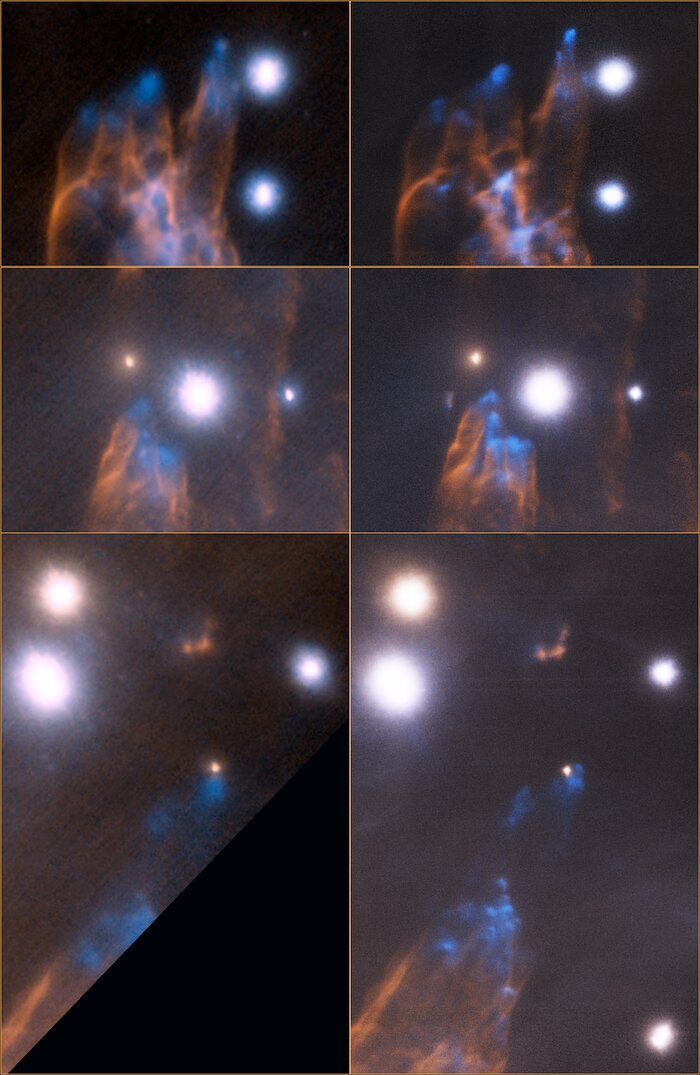Next-Generation Adaptive Optics Brings Remarkable Details To Light In Stellar Nursery
Detailed views of the Orion Bullet region. In each image pair, left is the Altair 2007 image and right is the new 2012 GeMS image. This close-up view emphasizes the gain realized by MCAO and GeMS compared to normal AO (Altair). With the multiple lasers and deformable mirrors, MCAO allows for compensation of the elongations of star images seen in the Altair images. These elongations are due to atmospheric turbulence located at high altitudes that cannot be corrected using normal AO. MCAO is able to make these corrections and offers a unique and uniform correction across the entire field. The GeMS image also has a significantly larger field-of-view covering three times the area of sky compared to Altair. Moreover, the pixels are smaller by a factor of 2.5 in the MCAO image, realizing the potential to capture more details in the image. Combining the smaller pixels and bigger field-of-view, GeMS is dramatically more efficient than other existing AO systems. In effect, with Altair, one would need 5 to 20 times (depending on conditions) more telescope time to accomplish the same science compared to GeMS.
Credit:Gemini Observatory/AURA
About the Image
| Id: | gemini1301b |
| Type: | Collage |
| Release date: | Jan. 8, 2013 |
| Related releases: | gemini1301 |
| Size: | 1224 x 1879 px |
About the Object
| Name: | Gemini Multi-Conjugate Adaptive Optics System (GeMS) |
| Category: | Nebulae |
